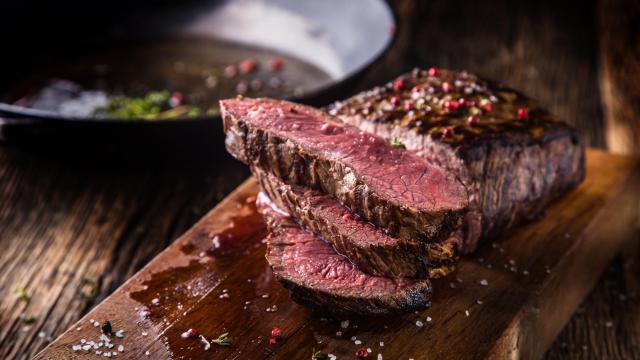With the exception of salt, pepper is the most common and ubiquitous seasoning in American cooking. The berries themselves vary wildly in both colour and flavour, but when and how you grind and cook them also has a big impact on their flavour. (Growing up, my sister called pre-ground black pepper “hot salt,” though it was mild enough to sprinkle liberally on cantaloupe.)
The little packet of black “pepper” that comes with pre-packaged lunches and takeout is so far removed from the freshly ground stuff, it’s hard to believe they come from the same berry. Grinding pepper releases its aromatic compounds, and those compounds can evaporate pretty quickly, which is why people make such a big deal out of “freshly ground pepper” at white tablecloth restaurants. The fresher it is, the more of those compounds you can taste.
Heat also has a huge impact on pepper’s flavour. A gentle toasting may drive off some of the more volatile flavours, but it can also enhance and enrich the aroma; but burnt pepper tastes bitter, even acrid, which is why I rarely season my steaks with pepper before cooking them.
This decision ultimately boils down to preference — I don’t want any bitterness competing with the pure, meaty flavour of the steak — but it also has to do with method. I love searing the heck out of my steaks in a scorching hot pan to maximise Maillard browning and crust formation, and “scorching hot” is not a temperature that is friendly towards pepper and its compounds. The coarse bits of peppercorn can also prevent the meat from making contact with the pan, resulting in an uneven sear.
But as long as you consider the peppercorn and the flavours you want to coax out of it, there’s no issue with peppering your steak before cooking it. Sometimes a little bitterness is nice, and let’s not forget that there is an entire classic French dish that celebrates this very combination of beef and toasty, slightly burnt pepper — steak au poivre.
The difference is that nearly all steak au poivre recipes call for a lower, gentler heat — usually medium, or medium-high — not the ripping, open-all-the-windows-and-turn-on-the-fans pan temps so many steak eaters (myself included) seemed to be obsessed with. The pepper-crusted steaks are delightful mixture of savoury, rich, pungent, and — yes — a little bitter.
So, when exactly should you pepper your steak? That’s up to you and your palate. If you want a slightly bitter, pungent, and contrasting crust, go ahead and season it beforehand, and maybe turn the heat down a little. If you want to taste pepper’s more floral, citrusy, woody notes, grind it on after the steak is finished cooking. You can also do both, depending on how much you like pepper.

Leave a Reply
You must be logged in to post a comment.